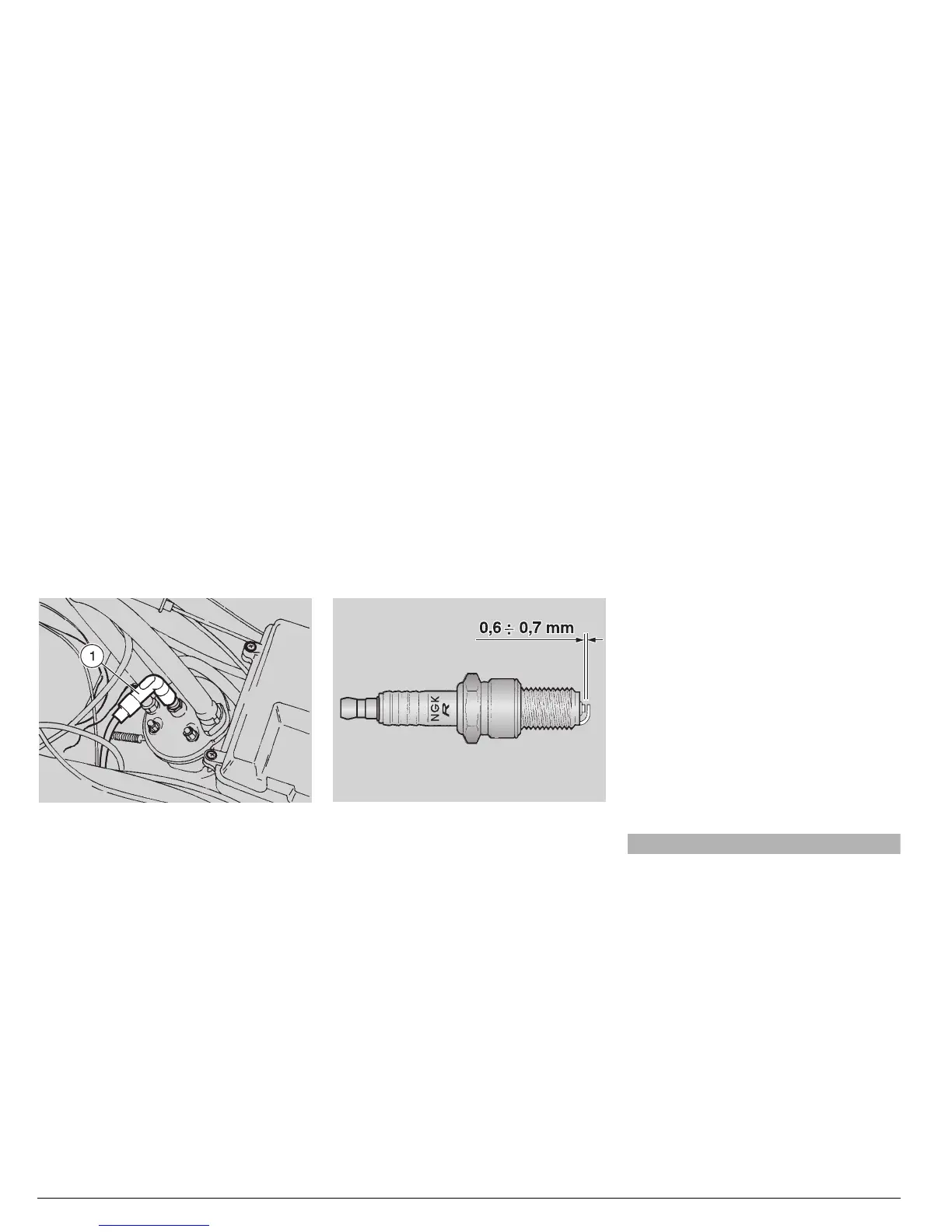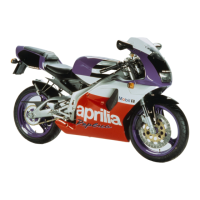58
use and maintenance RS 50
SPARK PLUG
Carefully read p. 39 (MAINTENANCE).
Clean the spark plug after the first 500 km
(312 mi) and successively every 1000 km
(625 mi); change it every 3000 km
(1875 mi).
Periodically remove the spark plug and
clean it carefully, removing carbon depos-
its; change it if necessary.
To reach the spark plug:
◆
Lift the fuel tank, see p. 53 (LIFTING
THE FUEL TANK).
To remove and clean the spark plug:
◆
Take off the spark plug cap (1).
◆
Remove all the dirt from the base of the
spark plug, then unscrew it with the
spanner you will find in the tool kit and
extract it from its seat, taking care that
neither dust nor other substances enter
the cylinder.
◆
Make sure that there are neither carbon
deposits, nor corrosion marks on the
electrode and on the central porcelain
part; if necessary, clean them with the
special cleaners for spark plugs, with an
iron wire and/or a metal brush.
◆
Energetically blow some air, in order to
prevent the removed residues from get-
ting into the engine.
If the spark plug has crackings on the in-
sulating material, corroded electrodes or
excessive deposits, it must be changed.
◆
Check the spark plug gap with a thick-
ness gauge.
The gap must be 0.6 ÷ 0.7 mm; if neces-
sary adjust it, carefully bending the earth
electrode.
◆
Make sure that the washer is in good
conditions. With the washer on, screw
the spark plug by hand in order not to
damage the thread.
◆
Tighten the spark plug by means of the
spanner you will find in the tool kit, giving
it half a turn to compress the washer.
Spark plug driving torque:
20 Nm (2 kgm).
CAUTION
The spark plug must be well tightened,
otherwise the engine may overheat and
be seriously damaged.
Use the recommended type of spark
plug only, see p. 72 (TECHNICAL DA-
TA), in order not to compromise the life
and performance of the engine.
◆
Position the spark plug cap properly, so
that it does not come off due to the vibra-
tions of the engine.
◆
Put back the fuel tank.

